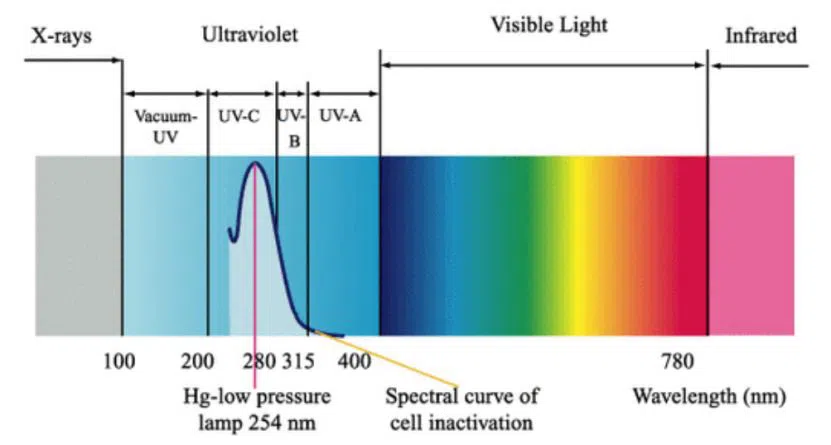English 


Views: 0 Author: Site Editor Publish Time: 2021-01-06 Origin: Site
Ultraviolet rays can kill bacteria and have a certain ability to cause cancer. Generally, we use 265nm 278nm UVC light to disinfect in commercial or certain fields, but can you eat food that has been treated with ultraviolet rays?
Ultraviolet is defined as electromagnetic radiation with a wavelength between 10 nanometers and 400 nanometers. However, in practical applications, the wavelength used is generally above 100 nanometers. UVA with a wavelength between 315 and 409 nanometers can usually tan the skin. UVB with a wavelength of 280 to 315 nanometers can burn the skin and increase the risk of skin cancer. UVC with a wavelength of 200 to 280 nanometers can effectively kill bacteria and viruses. Ultraviolet rays with a wavelength between 100 and 200 nanometers are absorbed by oxygen in the air, so they can only work in a vacuum or at least a completely oxygen-free environment, which is not suitable for actual sterilization.

When ultraviolet light is absorbed by bacteria or viruses, it will damage DNA, thereby making them lose their ability to multiply. As far as the sterilization result is concerned, it is the same as heating or chemical treatment. However, if the ultraviolet rays do not heat, it will not destroy the nutrients-because DNA is not the nutrient content of food, and the material molecules needed by the human body will not be destroyed. In addition, it will not destroy the natural flavor of the food. After all, chemical fungicides or preservatives introduce new substances, and sometimes they may also bring some "odors." The DNA molecules destroyed by ultraviolet rays will be decomposed when entering the human body, and no harmful substances will be produced. Therefore, although ultraviolet rays have the ability to cause cancer, foods treated with ultraviolet rays have no safety problems.
Any food processing method will "damage" the food to a certain extent. Compared with the most conventional heating, the damage of UV treatment is much smaller. For some foods that want to maintain a "natural taste", such as fruit juice, it has a great advantage.

Currently, there are three main types of UV sterilization applications in the food industry:
The first is the disinfection of food processing equipment. For the equipment, microorganisms always only stay on the surface, and the weak point of poor UV penetration is irrelevant, and the advantages of not heating and not introducing other substances (including water) are fully utilized.
The second is the pretreatment of food processing water. In order to reduce the microorganisms that may be introduced in the production process, sterilization and pretreatment of processing water is a multiplier measure with half the effort. Compared with the "chemical means" of chlorination or chloride, UV sterilization without introducing chemical substances can avoid the risk of sterilization by-products and also avoid the peculiar smell caused by fungicides.
Third, at present, fruit juice is mainly used for ultraviolet sterilization of food for direct consumption. The flavor of juice is easily changed by heating, so "non-thermal processing" is very attractive in juice production. The name of the fungicide does not make consumers like it. Therefore, UV sterilization without changing the flavor and introducing "chemical ingredients" is very useful.
